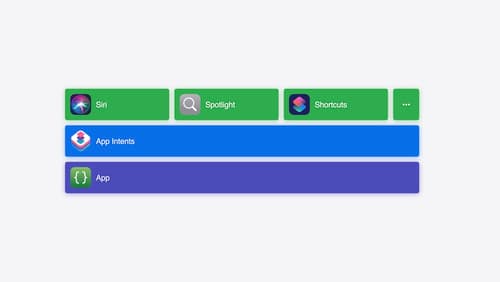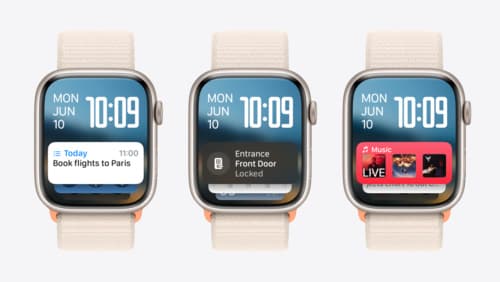interactive widgets
Asked on 2024-08-03
1 search
Interactive widgets were a significant focus at WWDC 2024, with several sessions discussing their implementation and capabilities across different platforms.
Key Points on Interactive Widgets:
-
General Overview:
- Interactive widgets allow users to perform actions directly from the widget without opening the app. This includes buttons and toggles that can execute app intents.
- These widgets are designed for glanceable information and quick actions, making them highly functional and user-friendly.
-
watchOS 11:
- Interactive widgets have been extended to watchOS 11, using the same APIs as iOS and macOS.
- All watchOS widget families support interactivity, although the shape and size of some widgets may limit the number of interactions.
- Example: The interactive home widget allows users to lock or unlock their door directly from the widget.
- For more details, refer to the session What’s new in watchOS 11.
-
Accessibility:
- Interactive widgets can be enhanced with accessibility features, such as custom actions and voiceover support.
- Example: A widget for rating and posting about beaches with interactive buttons that are accessible via voiceover.
- For more details, refer to the session Catch up on accessibility in SwiftUI.
-
App Intents:
- App intents are crucial for creating interactive widgets, allowing multiple interactive areas within a widget to perform actions and update states.
- Example: A widget that shows details about trails and allows users to configure which trail to display.
- For more details, refer to the session Bring your app’s core features to users with App Intents.
-
Smart Stack Integration:
- Widgets can be made more relevant by specifying contexts such as time of day, location, and routine, allowing the system to insert them into the smart stack at the right time.
- For more details, refer to the session Platforms State of the Union.
Sessions Mentioned:
- Bring your app’s core features to users with App Intents
- What’s new in watchOS 11
- Catch up on accessibility in SwiftUI
- Platforms State of the Union
These sessions provide a comprehensive look at how to implement and enhance interactive widgets across different Apple platforms.

Bring your app’s core features to users with App Intents
Learn the principles of the App Intents framework, like intents, entities, and queries, and how you can harness them to expose your app’s most important functionality right where people need it most. Find out how to build deep integration between your app and the many system features built on top of App Intents, including Siri, controls and widgets, Apple Pencil, Shortcuts, the Action button, and more. Get tips on how to build your App Intents integrations efficiently to create the best experiences in every surface while still sharing code and core functionality.

What’s new in watchOS 11
Explore new opportunities on Apple Watch, including bringing Double Tap support to your watchOS app, making your Smart Stack widgets even more relevant and interactive, and displaying your iOS Live Activities in the Smart Stack.

What’s new in SwiftUI
Learn how you can use SwiftUI to build great apps for any Apple platform. Explore a fresh new look and feel for tabs and documents on iPadOS. Improve your window management with new windowing APIs, and gain more control over immersive spaces and volumes in your visionOS apps. We’ll also take you through other exciting refinements that help you make expressive charts, customize and layout text, and so much more.
